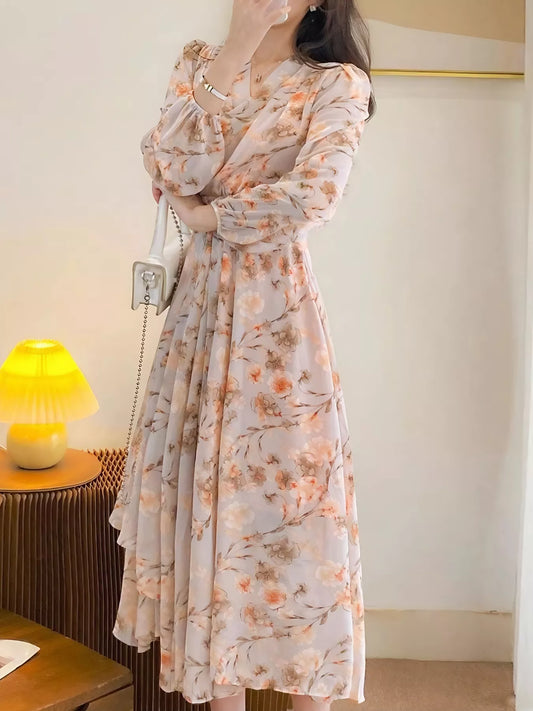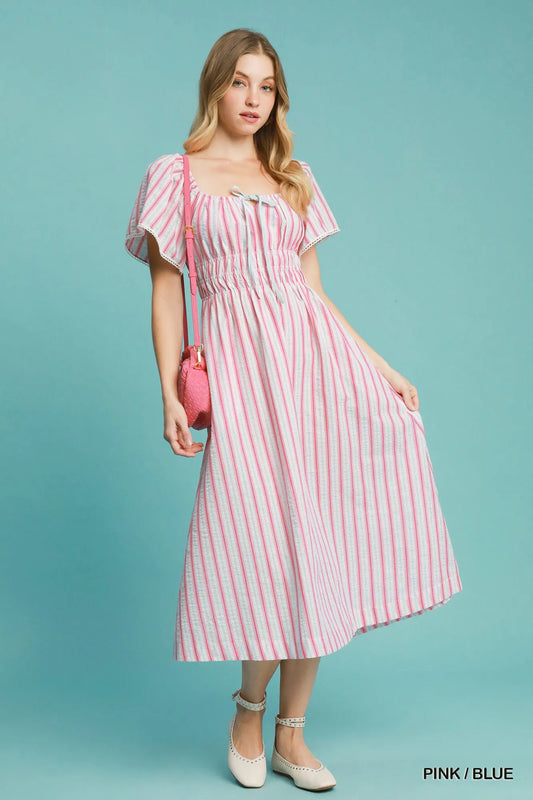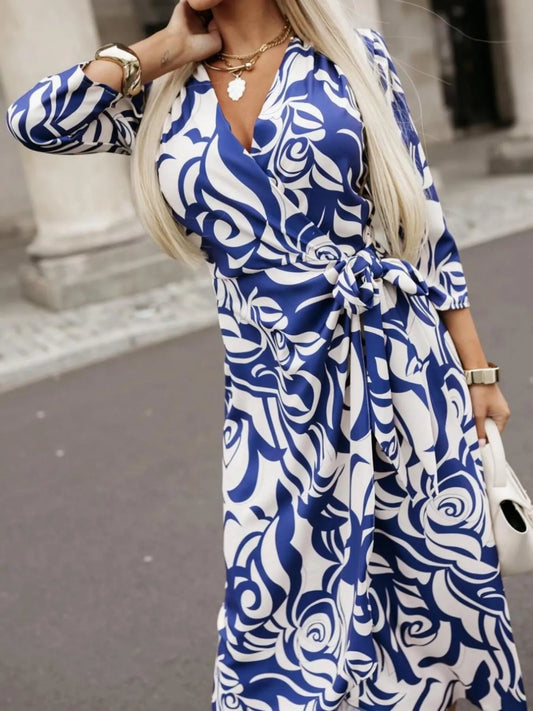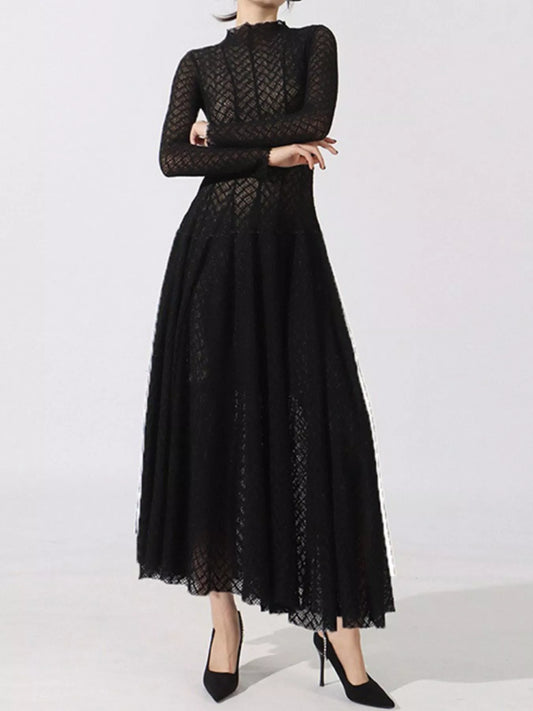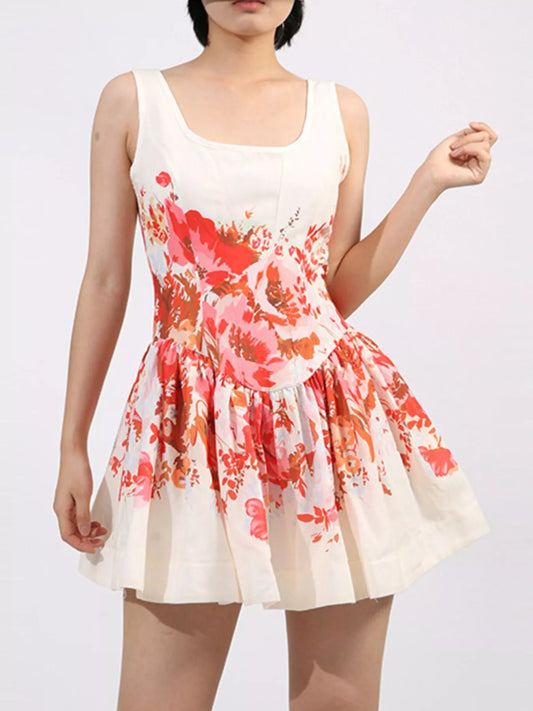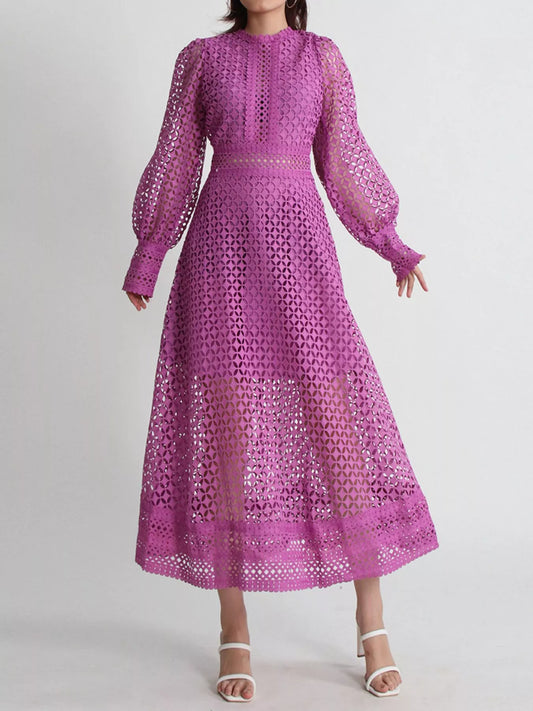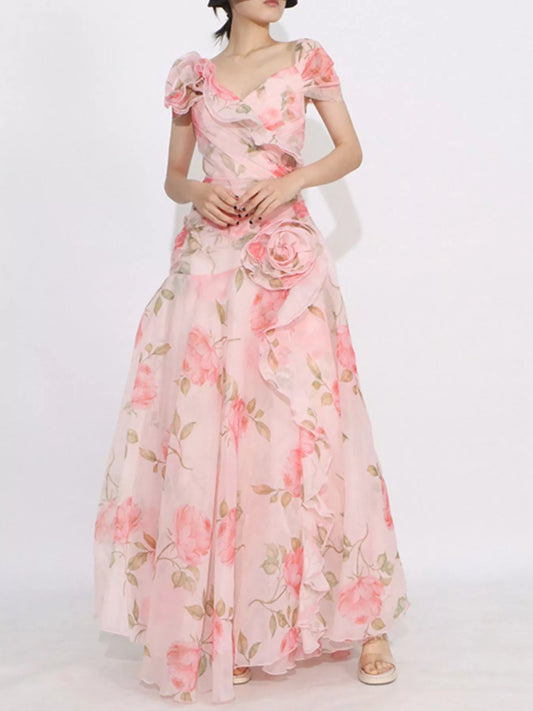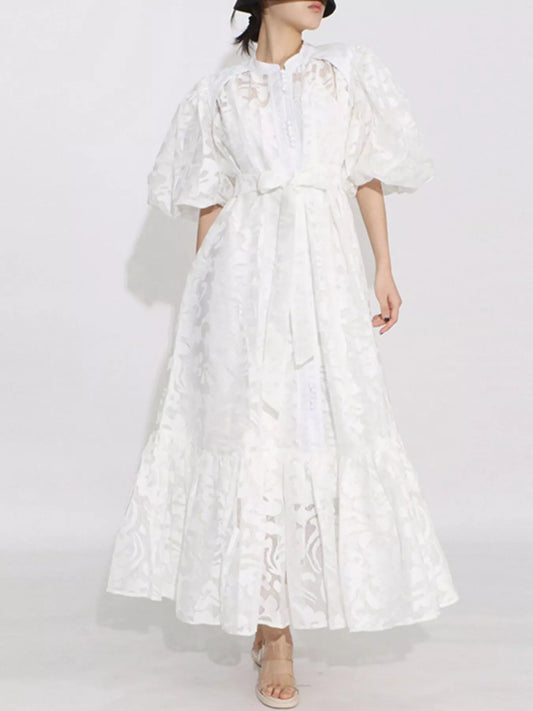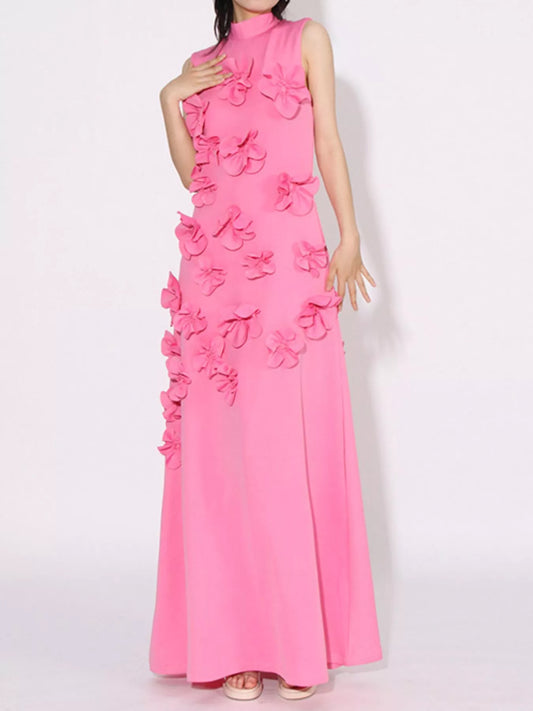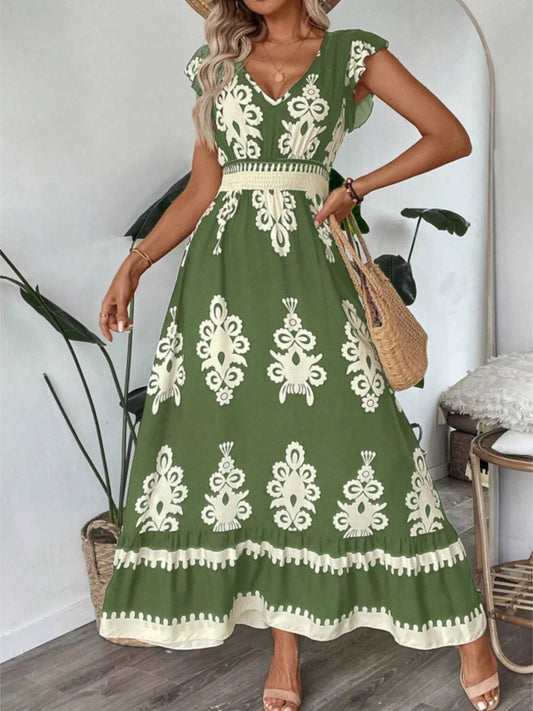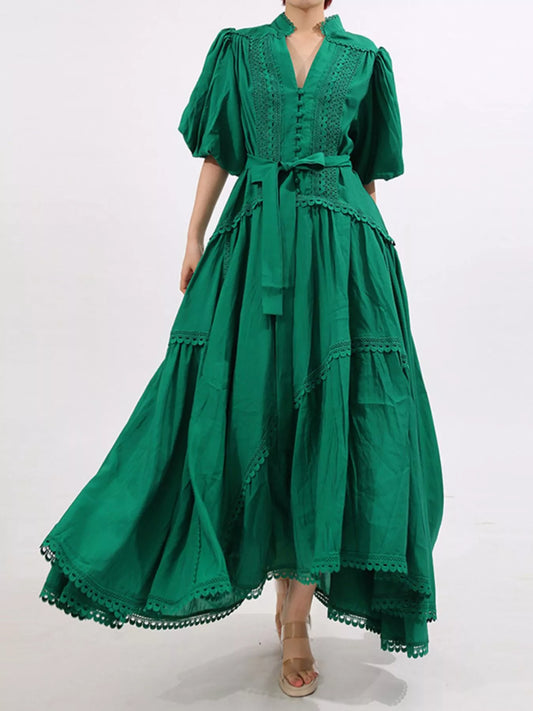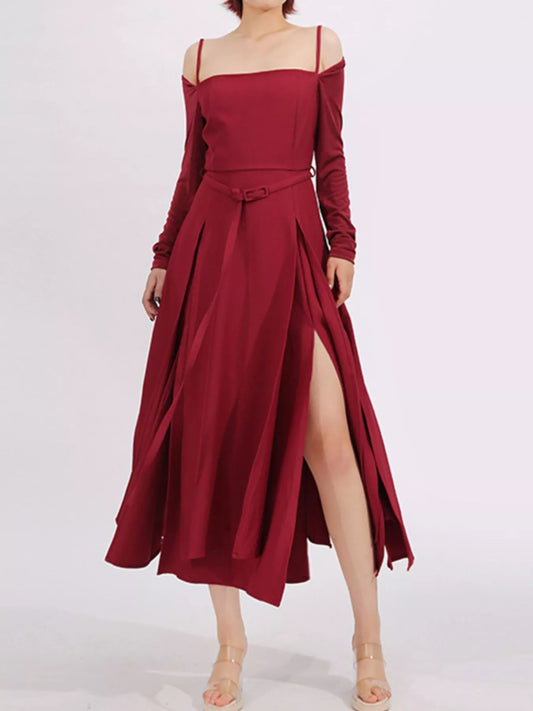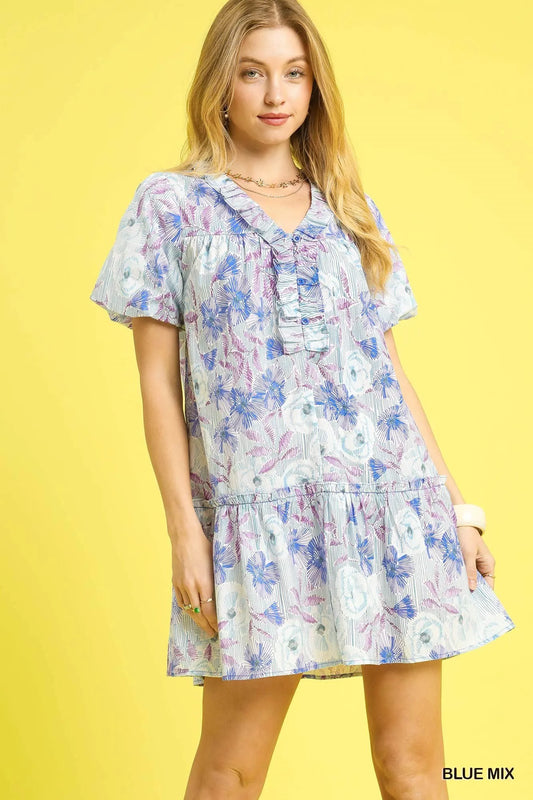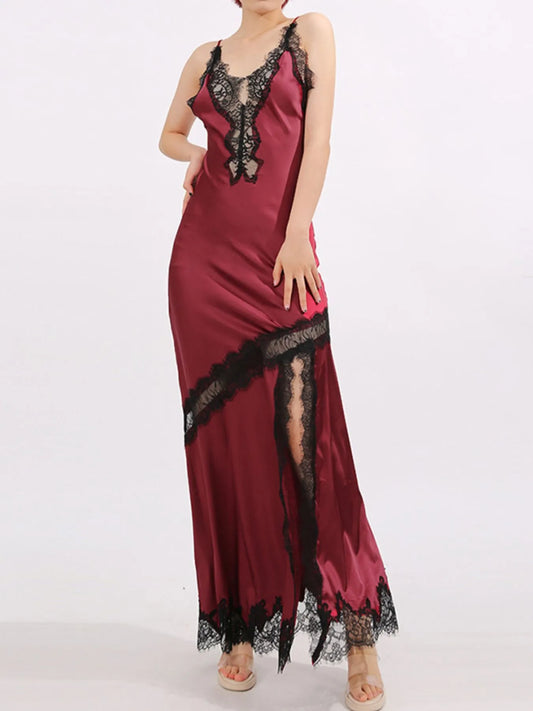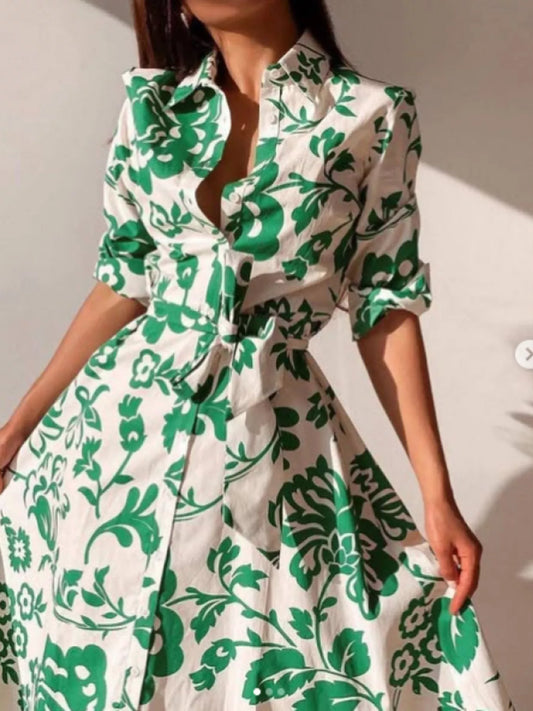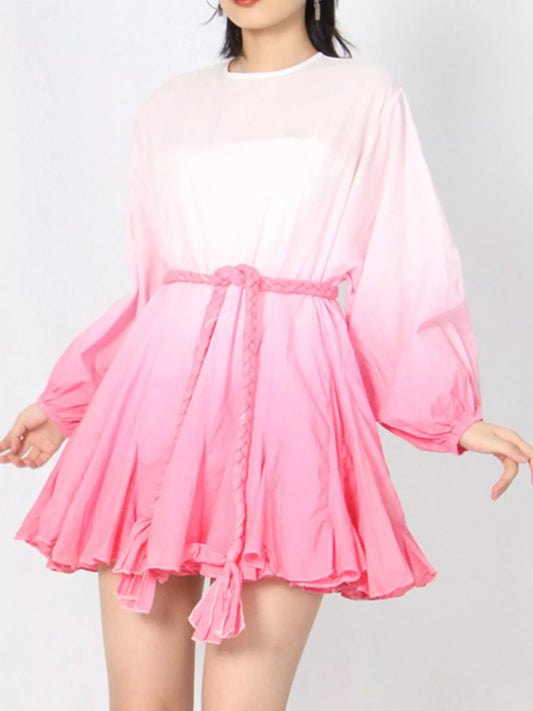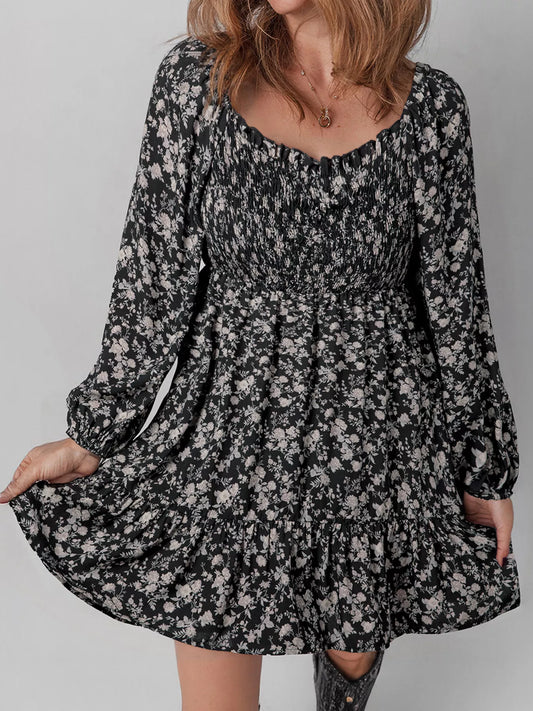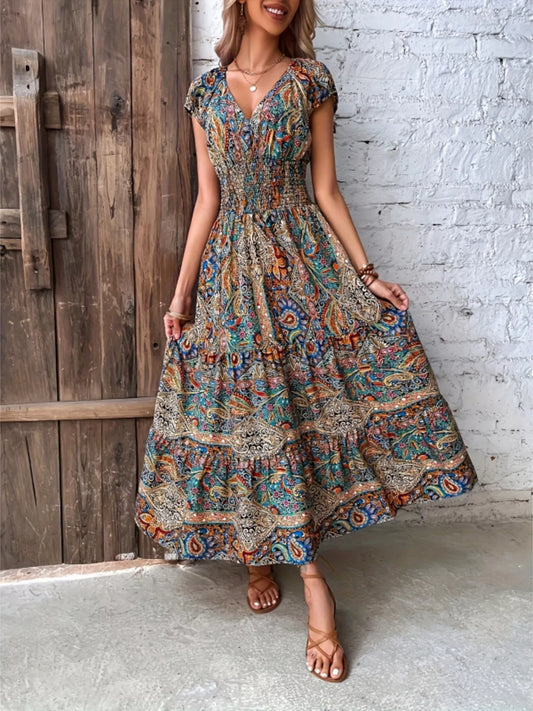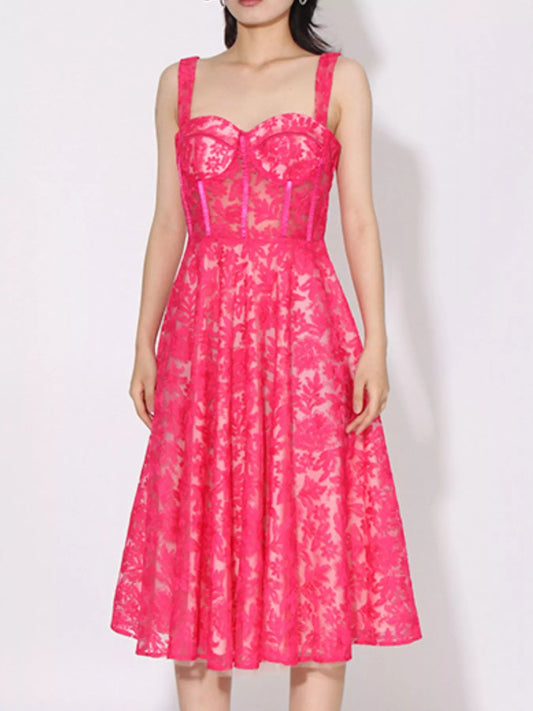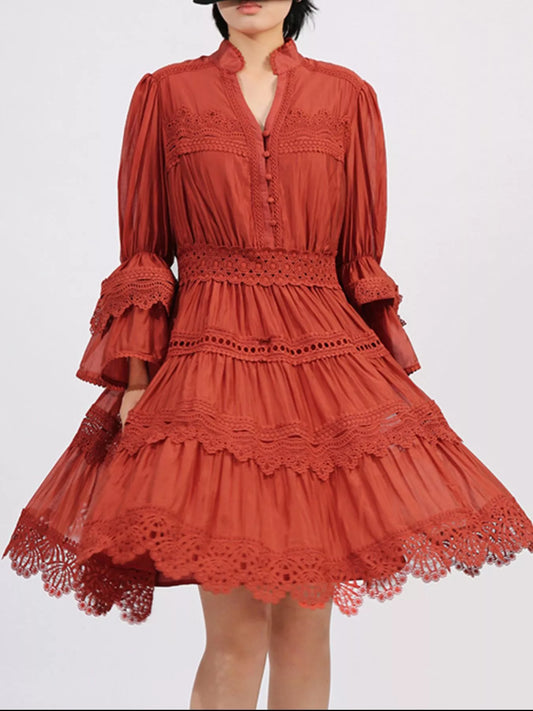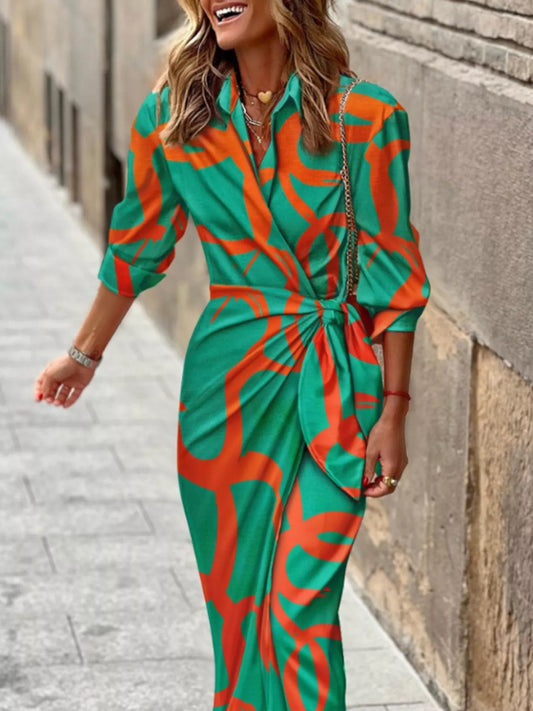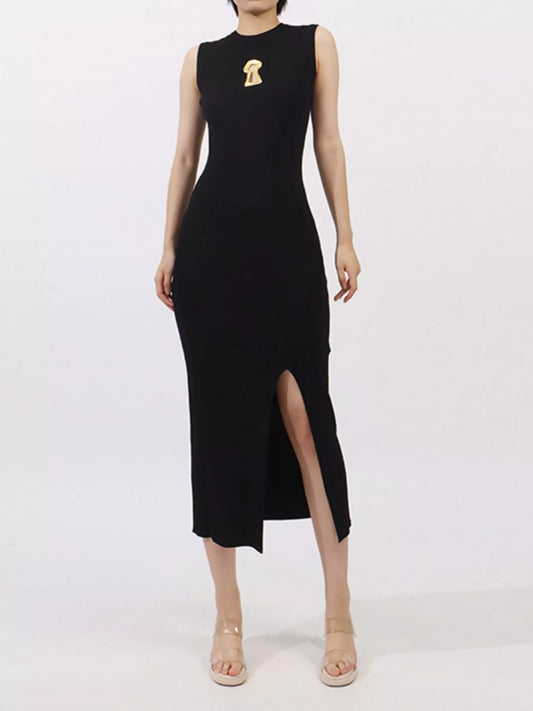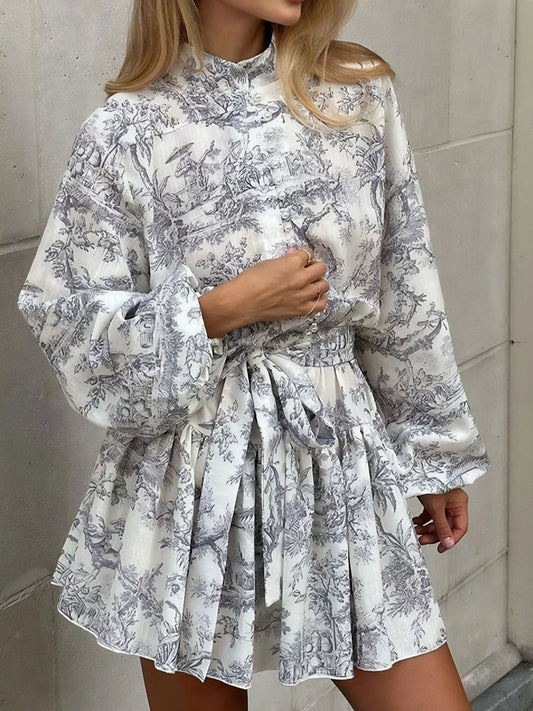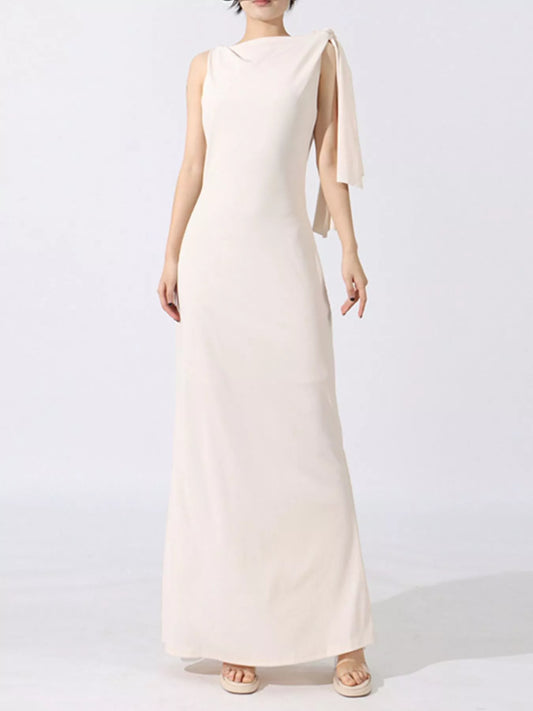Summer Dresses
-
Floral Print Long Sleeve Midi Dress
Regular price £34.00 GBPRegular priceUnit price / per£67.00 GBPSale price £34.00 GBPSale -
Umgee Smocked Striped Short Sleeve Midi Dress
Regular price £32.00 GBPRegular priceUnit price / per£63.00 GBPSale price £32.00 GBPSale -
Printed Surplice Long Sleeve Wrap Dress
Regular price £37.00 GBPRegular priceUnit price / per£74.00 GBPSale price £37.00 GBPSale -
Lace Mock Neck Long Sleeve Dress
Regular price £137.00 GBPRegular priceUnit price / per£273.00 GBPSale price £137.00 GBPSale -
Floral Print Sleeveless A-Line Mini Dress
Regular price £133.00 GBPRegular priceUnit price / per£265.00 GBPSale price £133.00 GBPSale -
Lace Long Sleeve Midi Dress
Regular price £153.00 GBPRegular priceUnit price / per£306.00 GBPSale price £153.00 GBPSale -
Floral Ruffled Short Sleeve Maxi Dress
Regular price £179.00 GBPRegular priceUnit price / per£358.00 GBPSale price £179.00 GBPSale -
Lace Puff Sleeve Tie Waist Maxi Dress
Regular price £179.00 GBPRegular priceUnit price / per£358.00 GBPSale price £179.00 GBPSale -
Floral Applique Mock Neck Sleeveless Maxi Dress
Regular price £153.00 GBPRegular priceUnit price / per£306.00 GBPSale price £153.00 GBPSale -
Printed V-Neck Ruffled Cap Sleeve Dress
Regular price £39.00 GBPRegular priceUnit price / per£78.00 GBPSale price £39.00 GBPSale -
Lace Detail Notched Puff Sleeve Maxi Dress
Regular price £214.00 GBPRegular priceUnit price / per£427.00 GBPSale price £214.00 GBPSale -
Slit Spaghetti Strap Long Sleeve Dress
Regular price £163.00 GBPRegular priceUnit price / per£325.00 GBPSale price £163.00 GBPSale -
Umgee Floral Ruffled Puff Sleeve Mini Dress
Regular price £32.00 GBPRegular priceUnit price / per£63.00 GBPSale price £32.00 GBPSale -
Slit Lace Detail Maxi Cami Dress
Regular price £102.00 GBPRegular priceUnit price / per£204.00 GBPSale price £102.00 GBPSale -
Printed Tie Waist Shirt Dress
Regular price £39.00 GBPRegular priceUnit price / per£77.00 GBPSale price £39.00 GBPSale -
Gradient Round Neck Balloon Sleeve Dress
Regular price £116.00 GBPRegular priceUnit price / per£232.00 GBPSale price £116.00 GBPSale -
Floral Long Sleeve Frilly Shirred Mini Dress
Regular price £46.00 GBPRegular priceUnit price / per£92.00 GBPSale price £46.00 GBPSale -
Printed V-Neck Cap Sleeve Dress
Regular price £37.00 GBPRegular priceUnit price / per£74.00 GBPSale price £37.00 GBPSale -
Lace Sweetheart Neck Cami Dress
Regular price £153.00 GBPRegular priceUnit price / per£306.00 GBPSale price £153.00 GBPSale -
Ruffle Lace Trim Long Sleeve Dress
Regular price £179.00 GBPRegular priceUnit price / per£358.00 GBPSale price £179.00 GBPSale -
Printed Collared Neck Shirt Dress
Regular price £37.00 GBPRegular priceUnit price / per£74.00 GBPSale price £37.00 GBPSale -
Slit Round Neck Sleeveless Dress
Regular price £111.00 GBPRegular priceUnit price / per£221.00 GBPSale price £111.00 GBPSale -
Printed Balloon Sleeve Tie Waist Dress
Regular price £36.00 GBPRegular priceUnit price / per£72.00 GBPSale price £36.00 GBPSale -
Tie Shoulder Sleeveless Maxi Dress
Regular price £68.00 GBPRegular priceUnit price / per£136.00 GBPSale price £68.00 GBPSale
Collection: Summer Dresses
Breezing Through: The Evolving Story of Summer Dresses
There is a moment each spring—sudden as a swallow’s dive—when a swell of warm air lifts hems and spirits alike. Storefront mannequins shed their wintry tweeds for cotton poplin, linen blends and fil-coupé florals. Shoppers, newly liberated from layers, reach reflexively for dresses that promise ease: one-piece solutions to sweltering commutes, garden weddings and the languid idleness of late-August afternoons. Yet beneath their sun-washed charm, summer dresses trace a map of cultural currents as complex as the season is carefree.
Over the past decade, designers have subtly rewritten the grammar of warm-weather dressing. Where once the sundress meant a narrow taxonomy—thin straps, cinched waist, a breeze-catching skirt—today’s offerings form a kaleidoscope of silhouettes. On recent runways, gauzy handkerchief hems drifted alongside minimalist tank dresses cut like elongated T-shirts. Luxury labels promoted ankle-skimming columns in barely there silk jersey, while emerging brands championed prairie-inspired frocks with puff sleeves and shirred bodices. The proliferation reflects a broader shift: instead of dictating a single silhouette, the industry is courting plurality, answering consumers who seek garments tuned to mood rather than mandate.
Fabric innovation has accelerated that expansion. Technical linens now resist wrinkling on cross-country flights; cupro and Tencel lend suppleness while sidestepping the environmental toll of conventional viscose. Designers, mindful of scorching heat waves that have redefined “summer” in many regions, are experimenting with open weaves and strategic cutouts that ventilate without veering into resort-wear cliché. Even the humble cotton poplin has been re-engineered in lighter weights with a subtle stretch, allowing a bodice to skim rather than squeeze.
Patterns, too, are in flux. Digital printing technologies permit gradients and photographic motifs once impossible on mass-produced yardage. Shoppers scrolling late-night feeds are met with lemon-grove murals, oversize gingham rendered in optical illusion scale, and psychedelic marbling reminiscent of 1970s album art. Meanwhile, a countercurrent of minimalist dressing persists—solid neutrals in ecru, chalk and jet that rely on proportion, not print, to make their case. The coexistence of maximalism and restraint underscores an age in which personal style trumps prescriptive trend cycles.
No discussion of contemporary summer dresses can ignore the triumph of smocking. What was once a nostalgic detail of childhood party wear has migrated to adult wardrobes with startling momentum. The elasticized technique offers size flexibility and lounge-level comfort—two attributes prized by consumers increasingly attuned to body-positivity dialogues and post-pandemic appetites for softness. Brands from fast-fashion juggernauts to heritage houses have joined the smocked ranks, producing midi-length silhouettes that hug the torso before unfurling into generous skirts—a silhouette as friendly to barefoot beach walks as to rooftop soirées.
Color stories reflect both escapism and pragmatism. Saturated hues—fuchsia, tangerine, cornflower—evoke optimism, a commodity in tense times. Equally prominent are earthy neutrals that promise longevity beyond a single season: olive drab paired with rope belts, camel enhanced by tortoiseshell buttons. The duality mirrors consumer behavior that toggles between impulse and investment, a balancing act heightened by social media’s rapid trend churn.
Accessories have recalibrated accordingly. The wide-brimmed raffia hat, once a seaside staple, now crowns city pavements; fisherman sandals anchor filmy slip dresses with utilitarian solidity. Layering, surprisingly, has entered summer’s realm: short-sleeve camp shirts worn unbuttoned over spaghetti-strap columns, or mesh jersey tees slipped beneath strappy frocks to extend wear into cooler evenings. Such styling tricks nod to sustainability concerns—stretching a dress’s utility across temperature swings and, by extension, justifying its place in a conscious closet.
Retailers report a renewed interest in garment provenance. Hangtags trumpeting organic cotton or recycled polyester catch discerning eyes, and brands offering traceability—down to farm, dye house and factory—garner goodwill. Some designers foreground local production, touting limited-run dresses sewn in downtown ateliers rather than distant industrial parks. The appeal is partly ethical, partly romantic: in an era of overnight shipping, the idea that a dress carries the imprint of human hands and hometown streets imbues it with narrative weight.
The global south—long a manufacturing base—has emerged as a wellspring of aesthetic influence. Nigerian labels reinterpret Ankara wax prints into contemporary shirt-dresses; Colombian artisans laser-cut leather into latticework shifts that ventilate as effectively as linen. These perspectives challenge Euro-American hegemony, enriching the summer wardrobe with silhouettes attuned to equatorial climates yet styled for international sidewalks.
Technological platforms continue to shape how dresses circulate. Livestream shopping events lure viewers with limited-edition drops and real-time chatter. Advanced size-recommendation algorithms lower return rates, encouraging online purchase of fit-sensitive garments that once demanded a dressing room. Augmented-reality filters let shoppers visualize how a canary-yellow trapeze dress might catch evening light on a Brooklyn rooftop before clicking “buy.” Such tools compress the gap between fantasy and fulfillment, though skeptics note that virtual drape cannot fully mimic the sway of fabric in actual breeze.
Within social contexts, the summer dress performs quiet cultural work. It is still chosen for first dates and courthouse weddings, for outdoor graduations and Sunday farmers markets. The garment’s capacity to oscillate between informality and ceremony renders it a sartorial lingua franca. Even workplaces, once bastions of tailored separates, have softened; midi dresses with modest necklines now pass muster at board meetings, especially when paired with blazers awaiting post-5 p.m. removal.
Climate realities, however, shadow the category’s buoyancy. Record heat indexes prompt speculation about future fabrics engineered for extreme temperatures, perhaps integrating cooling gels or phase-change materials once reserved for athletic wear. Designers contemplate seasonless collections, acknowledging that geographic variances blur the lines between spring, summer and resort. The quintessential “summer dress,” then, may evolve into a year-round proposition—styled with shearling‐lined clogs in January, bare-footed come July.
Care practices are adapting as well. Lightweight garments traditionally consigned to delicate cycles now enter washing machines equipped with microfiber-catching filters, mitigating plastic pollution. Air-dry instructions replace tumble settings to conserve energy and preserve elastic smocking. Some brands pilot repair programs, inviting customers to mend torn seams rather than replace entire garments, extending a dress’s lifecycle beyond the epoch of disposable fashion.
On city sidewalks this May, the evidence of change—and continuity—whispers in a thousand fabrics. A retiree in a seersucker shirtdress belts hers with rope, echoing the maritime mood of 1960s holiday postcards. A teenager opts for a rib-knit racerback that grazes sneakers, emblematic of athleisure’s grip on Gen Z style. Between them hurries an office worker in an A-line navy poplin number, pockets deep enough to holster phone and metro card. Each, in her own register, writes a stanza in the long poem of summer dress history.
If fashion is a barometer of collective longing, the current season reads hopeful. Dresses billow with the promise of ventilation and versatility, anchored by pragmatic fabrics and inclusive sizing. They invite the wearer to step lightly across baking pavement, to claim a shaded table for iced coffee, and to greet the year’s sun-bright days not with resignation but with a flick of hem that says, simply, “I’m ready.” In that gesture lives the perennial allure of the summer dress—an airy rejoinder to weightier seasons, and a reminder that style, at its best, can be as effortless as it is expressive.

